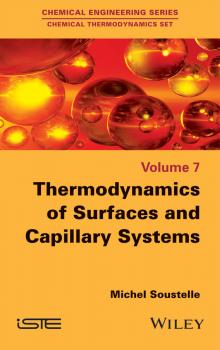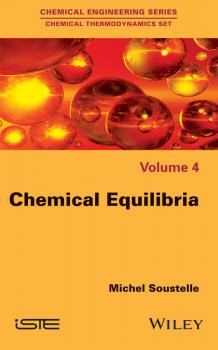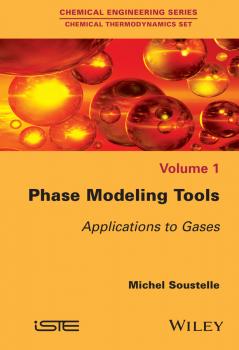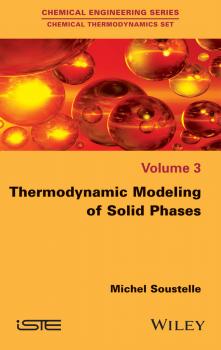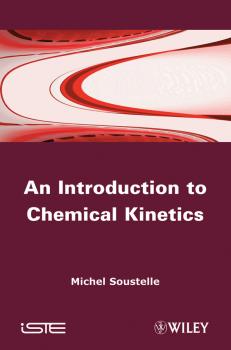ТОП просматриваемых книг сайта:
Michel Soustelle
Список книг автора Michel SoustelleАннотация
This book presents all the theoretical and practical basements of heterogeneous kinetics and reactivity of solids. It applies the new concepts of reactivity and spatial function, introduced by the author, for both nucleation and growth processes, with a unified presentation of the reactivity of bulk and powder solids, including gas-solid reactions, thermal decompositions, solid-solid reactions, reactions of solid solutions, and coalescence of solid grains. It also contains many exercises and problems with solutions included, allowing readers to understand and use all the concepts and methods discussed therein.
Аннотация
This book is part of a set of books which offers advanced students successive characterization tool phases, the study of all types of phase (liquid, gas and solid, pure or multi-component), process engineering, chemical and electrochemical equilibria, and the properties of surfaces and phases of small sizes. Macroscopic and microscopic models are in turn covered with a constant correlation between the two scales. Particular attention has been given to the rigor of mathematical developments. This volume, the final of the Chemical Thermodynamics Set, offers an in-depth examination of chemical thermodynamics. The author uses systems of liquids, vapors, solids and mixtures of these in thermodynamic approaches to determine the influence of the temperature and pressure on the surface tension and its consequences on specific heat capacities and latent heats. Electro-capillary phenomena, the thermodynamics of cylindrical capillary and small volume-phases are also discussed, along with a thermodynamic study of the phenomenon of nucleation of a condensed phase and the properties of thin liquid films. The final chapters discuss the phenomena of physical adsorption and chemical adsorption of gases by solid surfaces. In an Appendix, applications of physical adsorption for the determination of the specific areas of solids and their porosity are given.
Аннотация
This book is part of a set of books which offers advanced students successive characterization tool phases, the study of all types of phase (liquid, gas and solid, pure or multi-component), process engineering, chemical and electrochemical equilibria, and the properties of surfaces and phases of small sizes. Macroscopic and microscopic models are in turn covered with a constant correlation between the two scales. Particular attention has been paid to the rigor of mathematical developments. This sixth volume is made up of two parts. The first part focuses on the study of ionic equilibria in water or non-aqueous solvents. The following are then discussed in succession: the dissociation of electrolytes, solvents and solvation, acid-base equilibria, formation of complexes, redox equilibria and the problems of precipitation. Part 2 discusses electrochemical thermodynamics, with the study of two groups: electrodes and electrochemical cells. The book concludes with the study of potential-pH diagrams and their generalization in an aqueous or non-aqueous medium.
Аннотация
This book is part of a set of books which offers advanced students successive characterization tool phases, the study of all types of phase (liquid, gas and solid, pure or multi-component), process engineering, chemical and electrochemical equilibria, and the properties of surfaces and phases of small sizes. Macroscopic and microscopic models are in turn covered with a constant correlation between the two scales. Particular attention has been given to the rigor of mathematical developments. This second volume in the set is devoted to the study of liquid phases.
Аннотация
This book is part of a set of books which offers advanced students successive characterization tool phases, the study of all types of phase (liquid, gas and solid, pure or multi-component), process engineering, chemical and electrochemical equilibria, and the properties of surfaces and phases of small sizes. Macroscopic and microscopic models are in turn covered with a constant correlation between the two scales. Particular attention has been given to the rigor of mathematical developments. This fifth volume is devoted to the study of transformations and equilibria between phases. First- and second-order pure phase transformations are presented in detail, just as with the macroscopic and microscopic approaches of phase equilibria. In the presentation of binary systems, the thermodynamics of azeotropy and demixing are discussed in detail and applied to strictly-regular solutions. Eutectic and peritectic points are examined, as well as the reactions that go with them. The study of ternary systems then introduces the concepts of ternary azeotropes and eutectics. For each type of solid-liquid system, the interventions of definite compounds with or without congruent melting are taken into account. The particular properties of the different notable points of a diagram are also demonstrated.
Аннотация
The book offers advanced students, in 7 volumes, successively characterization tools phases, the study of all types of phase, liquid, gas and solid, pure or multi-component, process engineering, chemical and electrochemical equilibria, the properties of surfaces and phases of small sizes. Macroscopic and microscopic models are in turn covered with a constant correlation between the two scales. Particular attention was given to the rigor of mathematical developments. Besides some very specialized books, the vast majority of existing works are intended for beginners and therefore limited in scope. There is no obvious connection between the two categories of books, general books does not go far enough in generalizing concepts to enable easy reading of advanced literature. The proposed project aims to give readers the ability to read highly specialized publications based on a more general presentation of the different fields of chemical thermodynamics. Consistency is ensured between the basic concepts and applications. So we find, in the same work, the tools, their use and comparison, for a more general macroscopic description and a microscopic description of a phase.
Аннотация
This book is part of a set of books which offers advanced students successive characterization tool phases, the study of all types of phase (liquid, gas and solid, pure or multi-component), process engineering, chemical and electrochemical equilibria, and the properties of surfaces and phases of small sizes. Macroscopic and microscopic models are in turn covered with a constant correlation between the two scales. Particular attention has been given to the rigor of mathematical developments.
Аннотация
This book offers advanced students, in 7 volumes, successively characterization tools phases, the study of all types of phase, liquid, gas and solid, pure or multi-component, process engineering, chemical and electrochemical equilibria, the properties of surfaces and phases of small sizes. Macroscopic and microscopic models are in turn covered with a constant correlation between the two scales. Particular attention is given to the rigor of mathematical developments. This book focuses on solid phases.
Аннотация
This book is a progressive presentation of kinetics of the chemical reactions. It provides complete coverage of the domain of chemical kinetics, which is necessary for the various future users in the fields of Chemistry, Physical Chemistry, Materials Science, Chemical Engineering, Macromolecular Chemistry and Combustion. It will help them to understand the most sophisticated knowledge of their future job area. Over 15 chapters, this book present the fundamentals of chemical kinetics, its relations with reaction mechanisms and kinetic properties. Two chapters are then devoted to experimental results and how to calculate the kinetic laws in both homogeneous and heterogeneous systems. The following two chapters describe the main approximation modes to calculate these laws. Three chapters are devoted to elementary steps with the various classes, the principles used to write them and their modeling using the theory of the activated complex in gas and condensed phases. Three chapters are devoted to the particular areas of chemical reactions, chain reactions, catalysis and the stoichiometric heterogeneous reactions. Finally the non-steady-state processes of combustion and explosion are treated in the final chapter.


